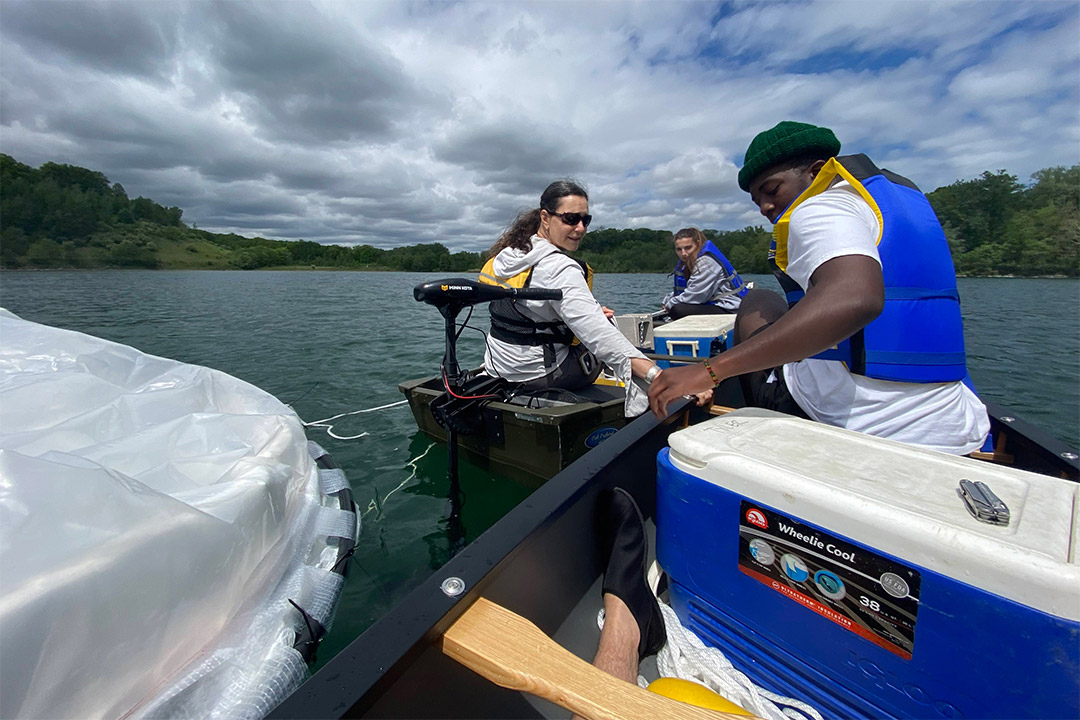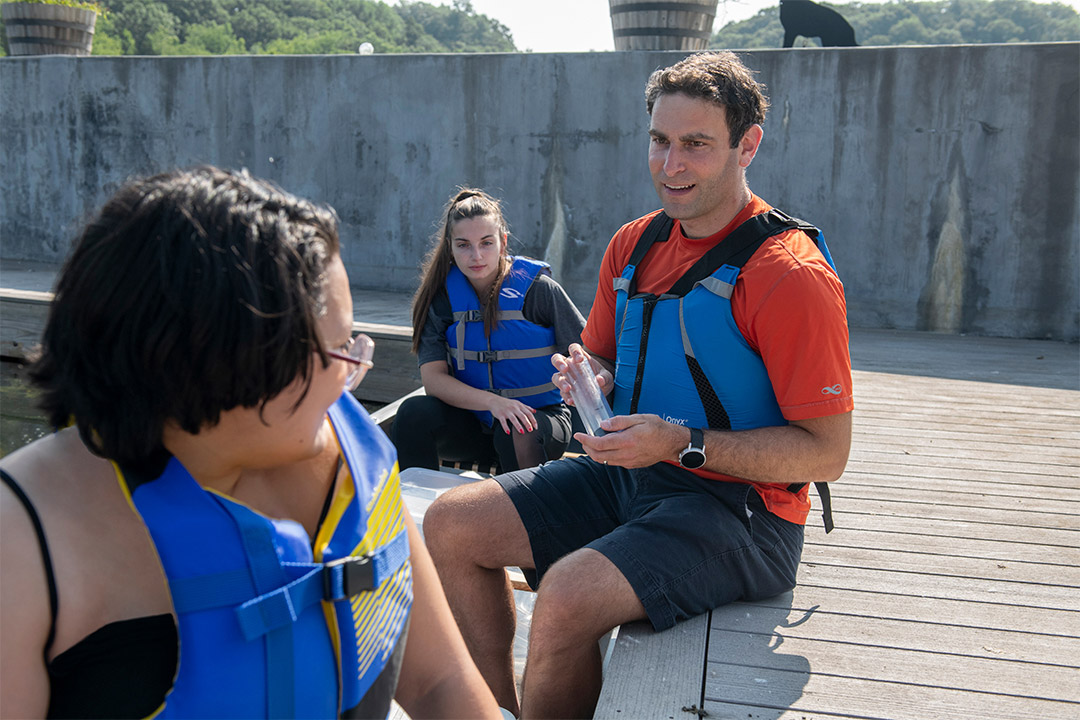Researchers receive funding to research and address how plastic ends up in Great Lakes
Matthew Hoffman and Christy Tyler secure more than $420,000 in grants from NOAA
Christy Tyler, left, is co-principal investigator on two NOAA Marine Debris Program grants to research, remove, and develop prevention measures for plastic waste entering the Great Lakes.
Rochester Institute of Technology scientists will investigate plastic waste entering the Great Lakes and develop prevention and removal measures thanks in part to more than $420,000 in funding from the National Oceanic and Atmospheric Administration (NOAA). Professor Christy Tyler from the Thomas H. Gosnell School of Life Sciences and Associate Professor Matthew Hoffman from the School of Mathematical Sciences secured two NOAA Marine Debris Program awards to lead interdisciplinary projects with big environmental implications.
Tyler and Hoffman are dual-principal investigators on a $332,000 research grant to study how plastic debris moves through rivers, streams, and stormwater management systems and ultimately ends up in Lake Ontario. Using new technology, including Seabins and LittaTraps, the research team will collect samples in rural, suburban, and urban areas throughout Monroe County to analyze how plastic collects, moves, and degrades throughout the watershed.
Elizabeth Lamark
Matthew Hoffman, right, is co-principal investigator on the two NOAA Marine Debris Program grants—one for research and the other for prevention and removal.
“Based on our prior work, we have learned what happens once plastic gets to the Great Lakes, but we need a better idea of what gets there, where it comes from, and what happens to it along the way,” said Tyler. “There are many ways plastic leaks into the environment. It happens from rural agriculture all the way to city sidewalks. But what kind of plastic? Is it held up somewhere along that route as it’s moving through the environment or does it travel straight to the lake? Where should we focus efforts to stem the flow of plastic to the lakes? These are some of the questions we hope to answer.”
The RIT College of Science faculty said they are taking a multidisciplinary approach to the research because plastic pollution is such a widespread and multifaceted problem. Their co-PIs on the grant include Professor André Hudson, head of the Thomas H. Gosnell School of Life Sciences; Nathan Eddingsaas from the School of Chemistry and Materials Science; and Steven Day from the Department of Biomedical Engineering in the Kate Gleason College of Engineering. Undergraduate and graduate students from across the university will be heavily involved in the research and the researchers are partnering with the Seneca Park Zoo Society, Monroe County, the Town of Brighton, DiMarco Group, Daniele Family Companies' Southpoint and Westpoint Marinas, and a number of other local entities.
“We’re excited to branch out and apply some of the fundamental research we’ve worked on over the past several years in ways that will benefit the greater Rochester area,” said Hoffman. “We’ll develop a better understanding of the pathways for plastic entering the environment, how long it takes, and how plastic behaves when it gets there.”
Tyler and Hoffman received more than $90,000 from a second grant led by the Council for the Great Lakes Region to increase debris removal from storm water and major tributaries entering Lake Ontario. The international collaboration is funded through the United States-Mexico-Canada Agreement Implementation Act and aims to improve public awareness and engagement with the problem of plastic pollution.

